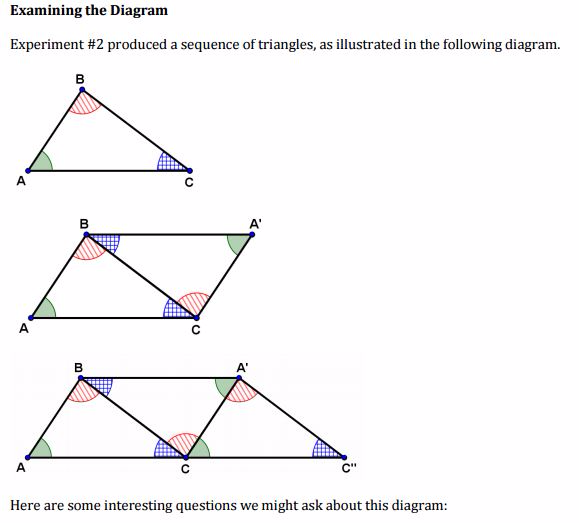IM2: 5.1 How do you know that?
Triangle Angle Experiment
1. What does this experiment reveal about the sum of the interior angles of the triangles you cut out, and how does it do so?
2. Since you and your classmates have performed this experiment with several different triangles, does it guarantee that we will observe this same result for all triangles? Why or why not?
Experiment #2
3. What does this experiment reveal about the sum of the interior angles of the triangles you rotated, and how does it do so?
4. Do you think you can rotate all triangles in the same way about the midpoints of its sides, and get the same results? Why or why not?

5. Will the second figure in the sequence always be a parallelogram? Why or why not?
6. Will the last figure in the sequence always be a trapezoid? Why or why not?
Write your Reflection here.